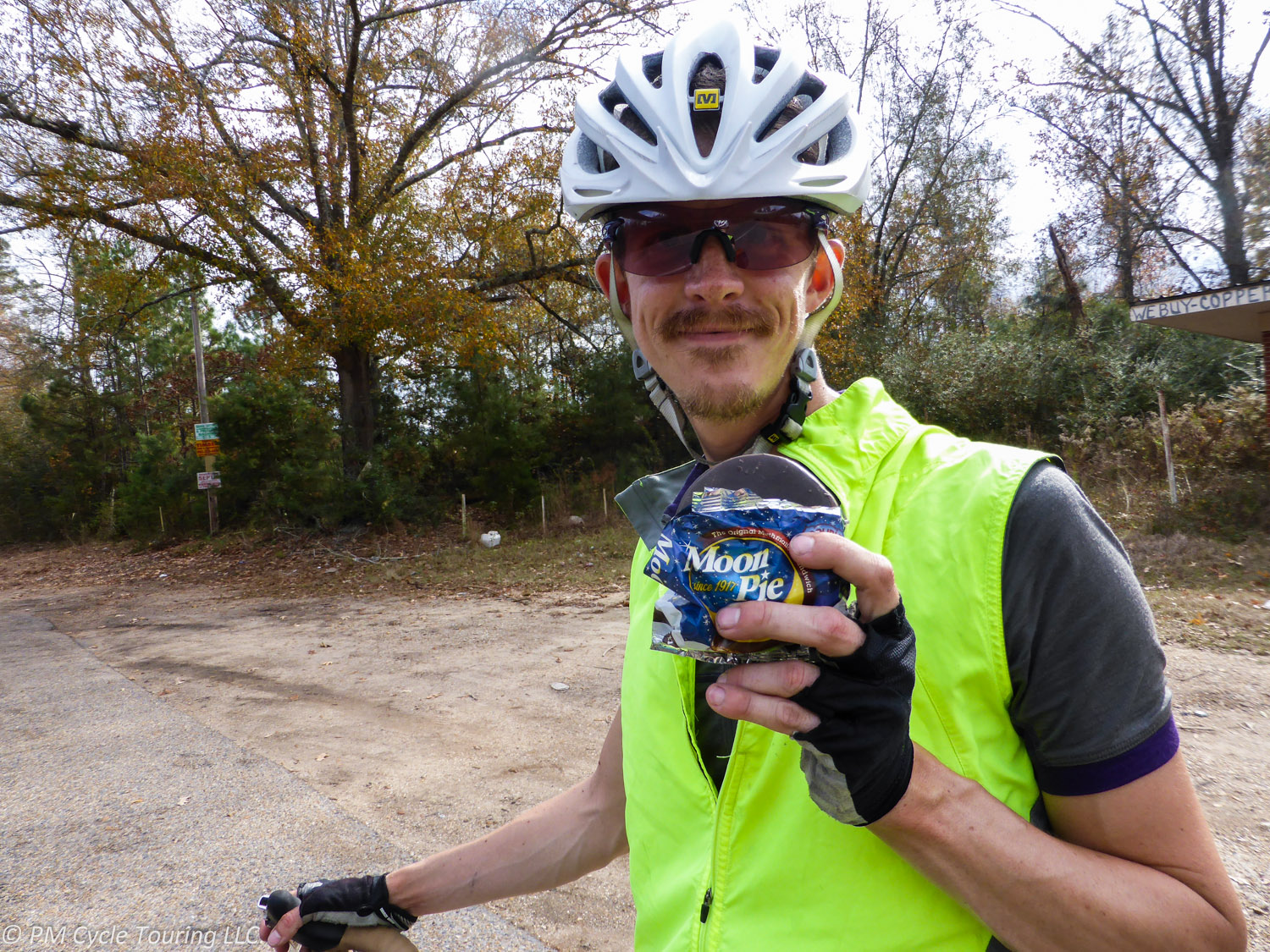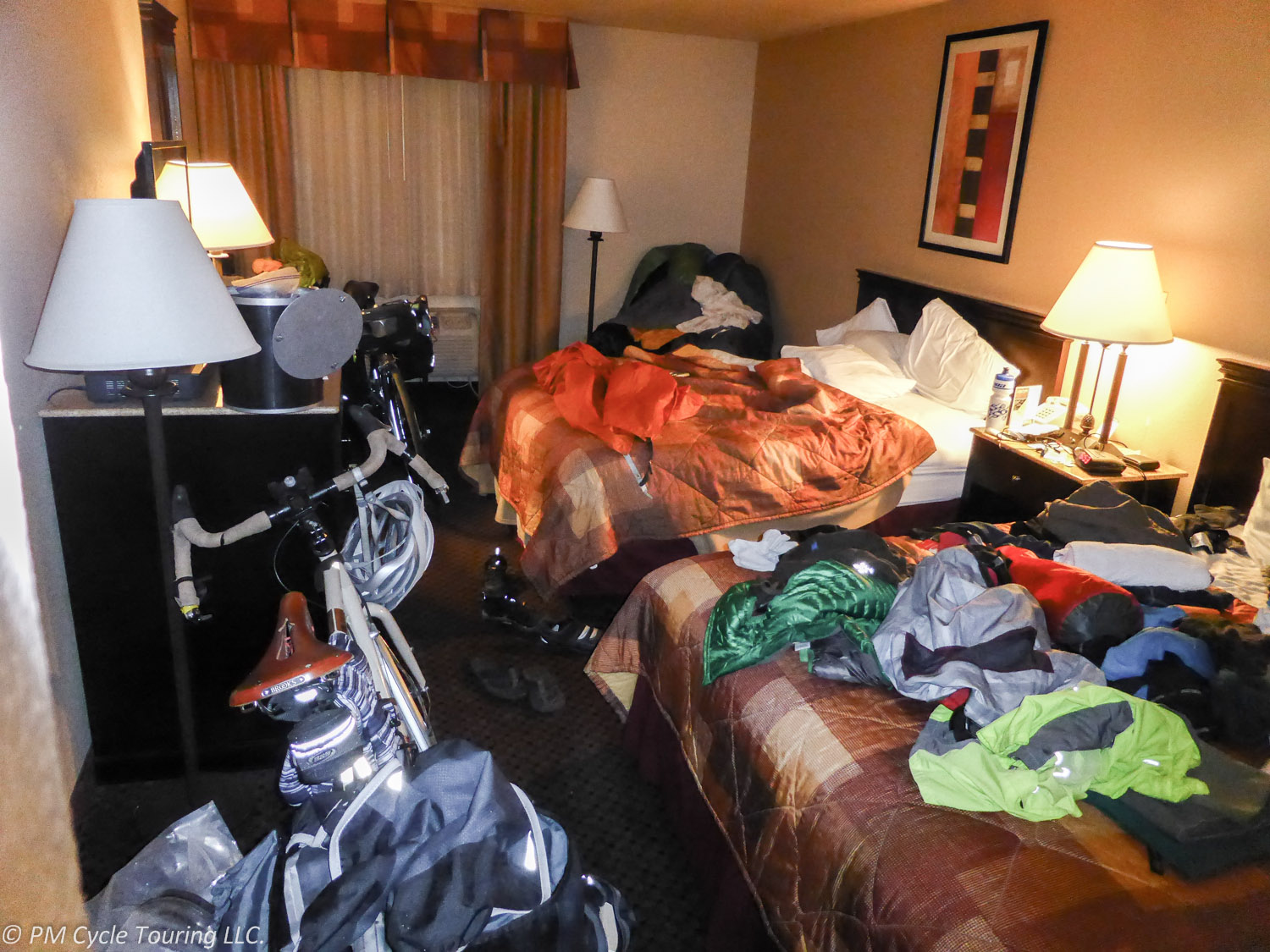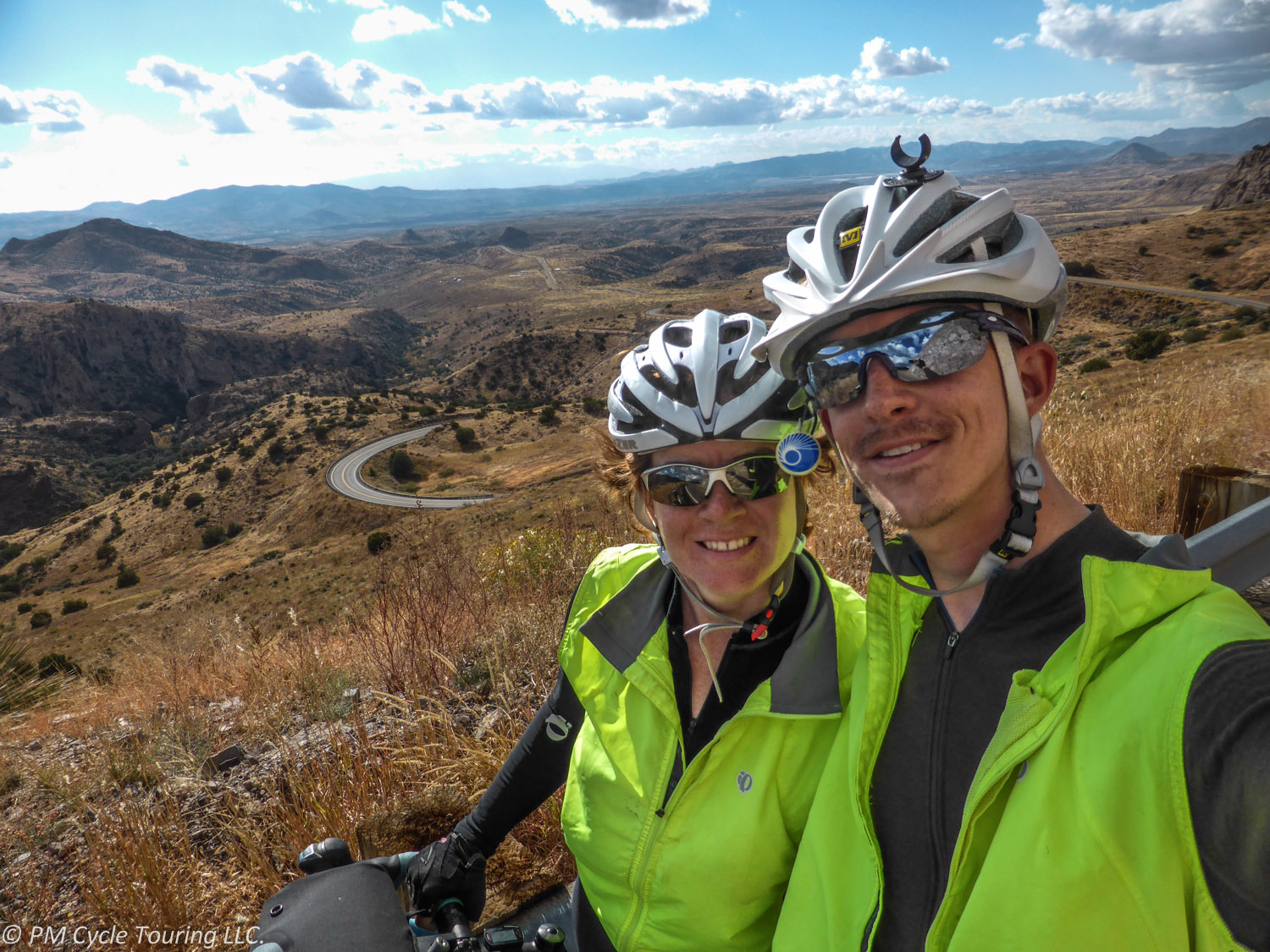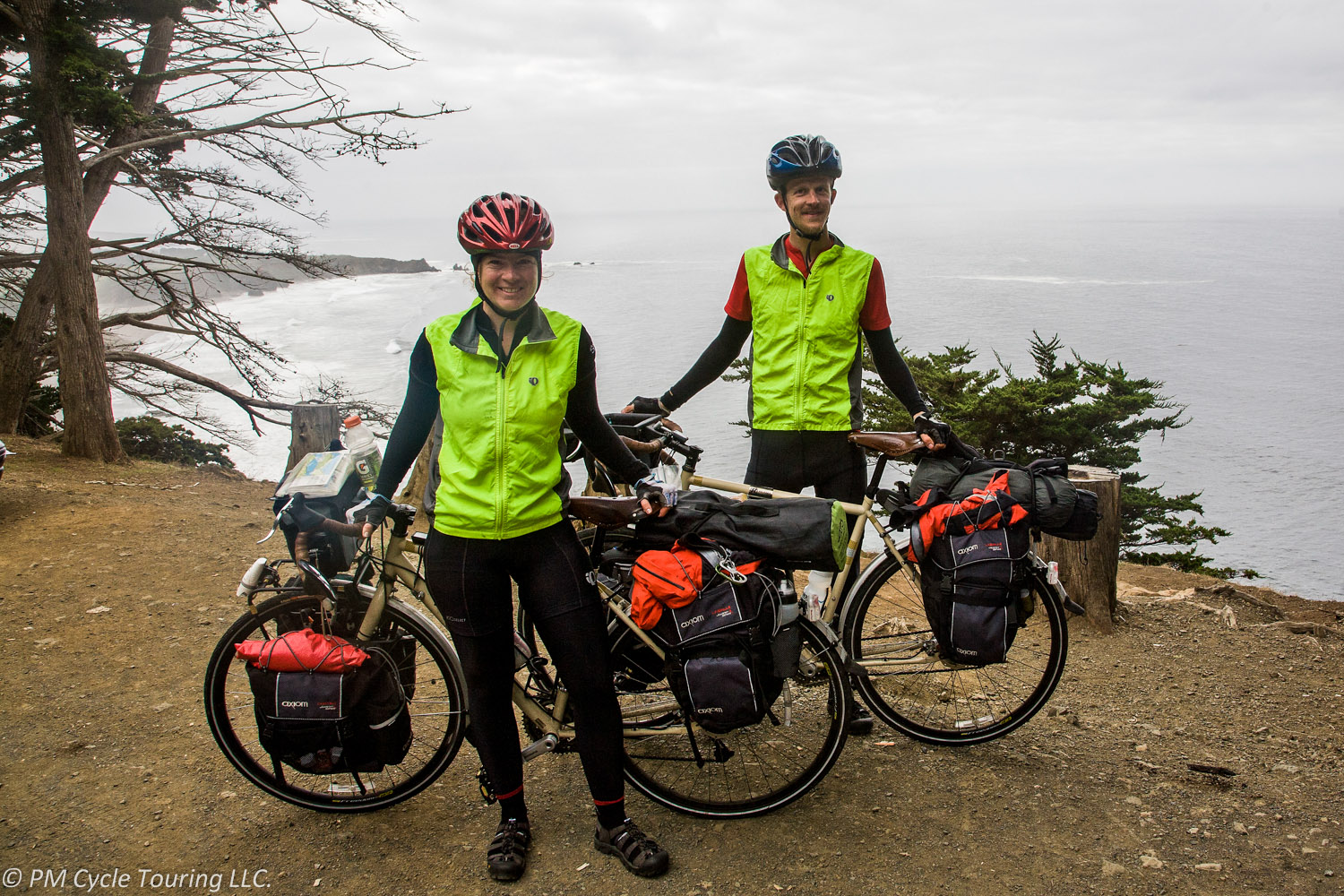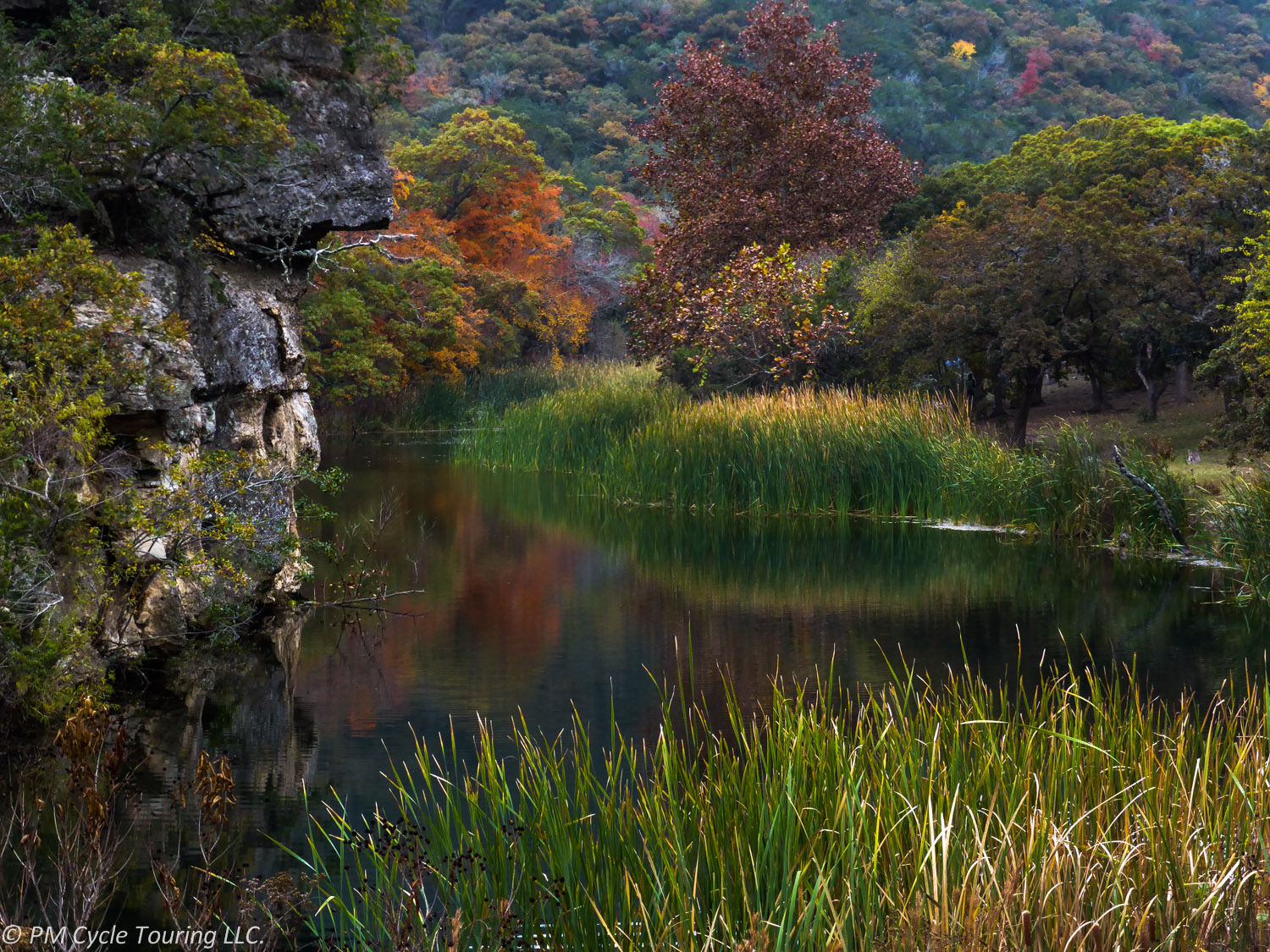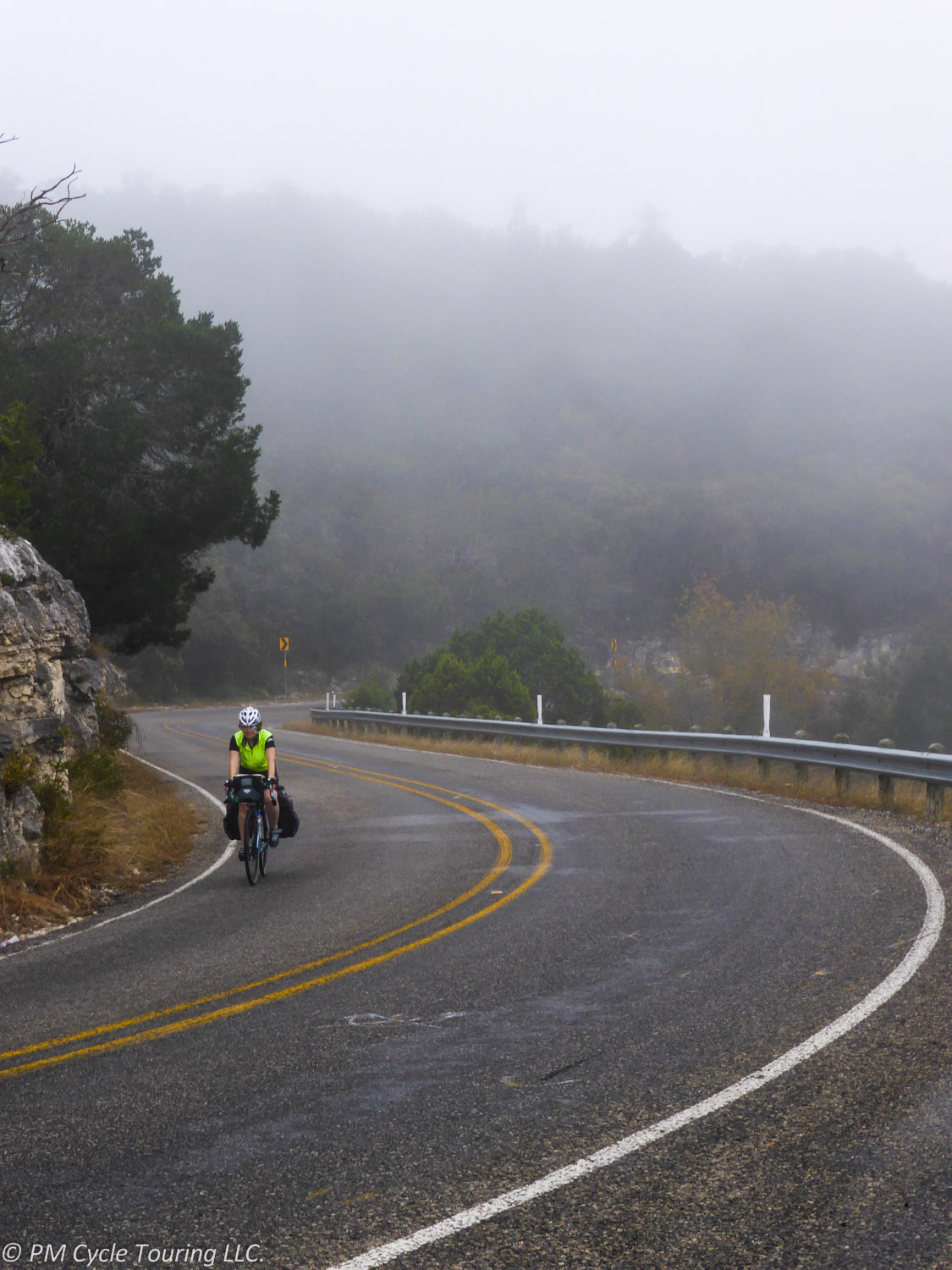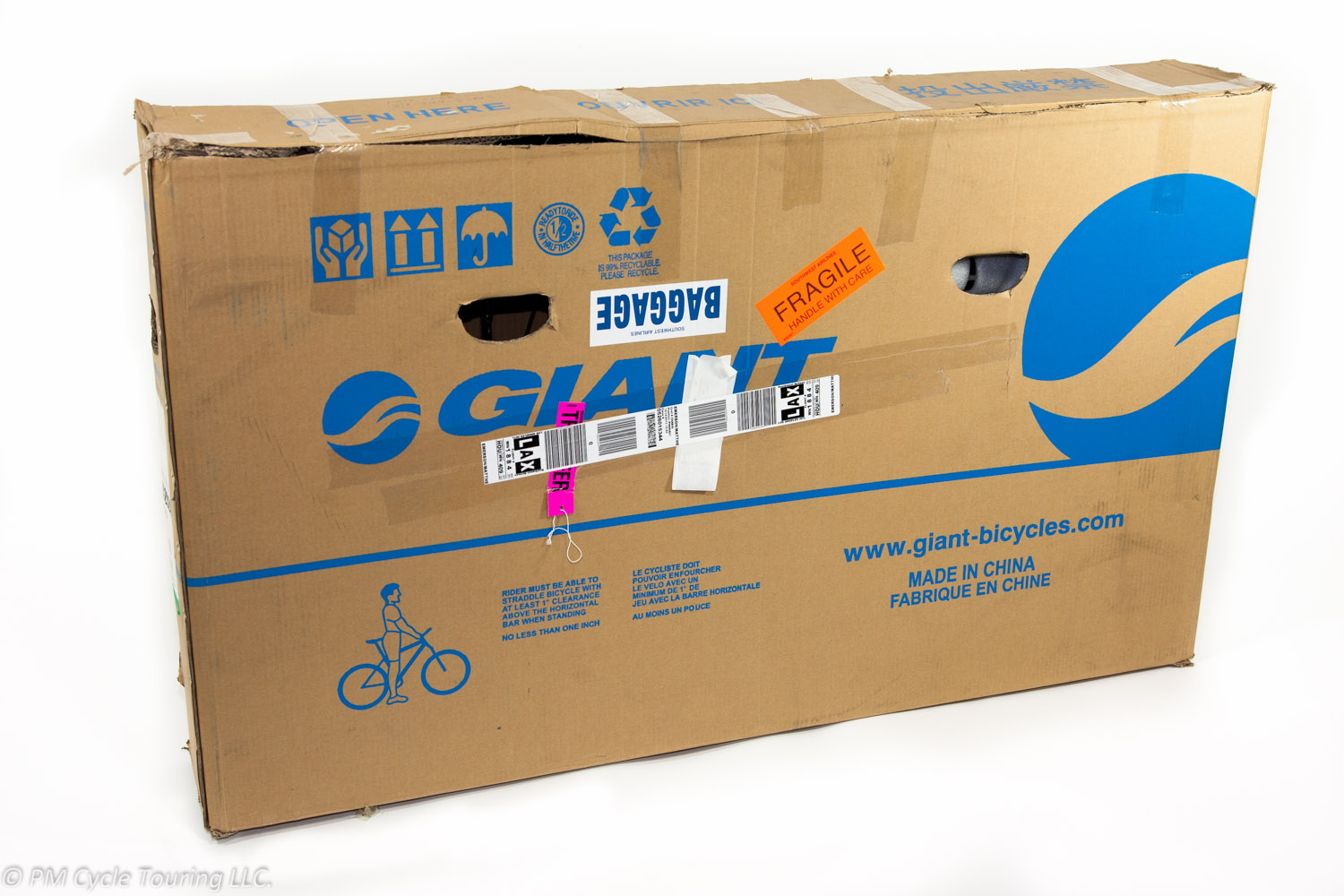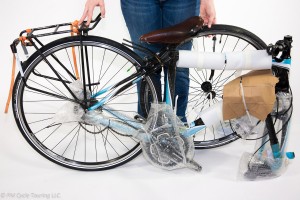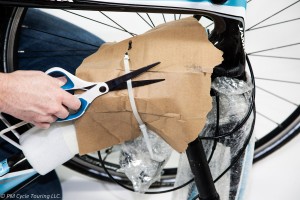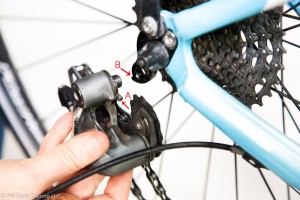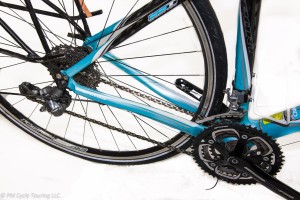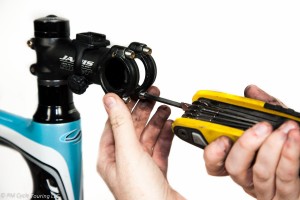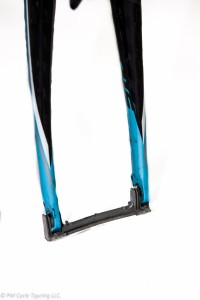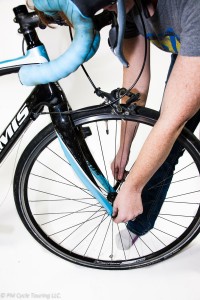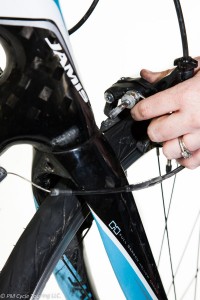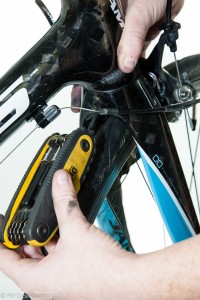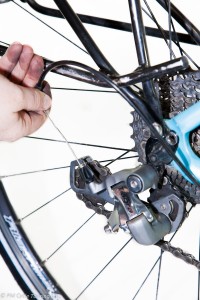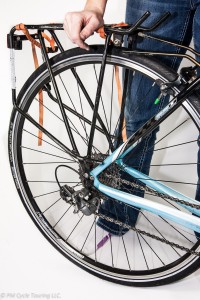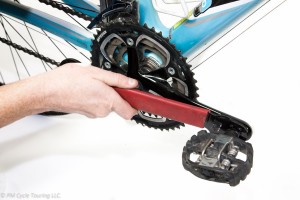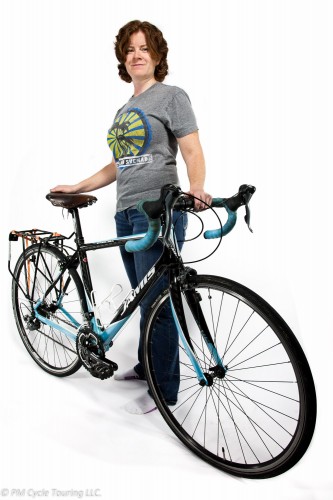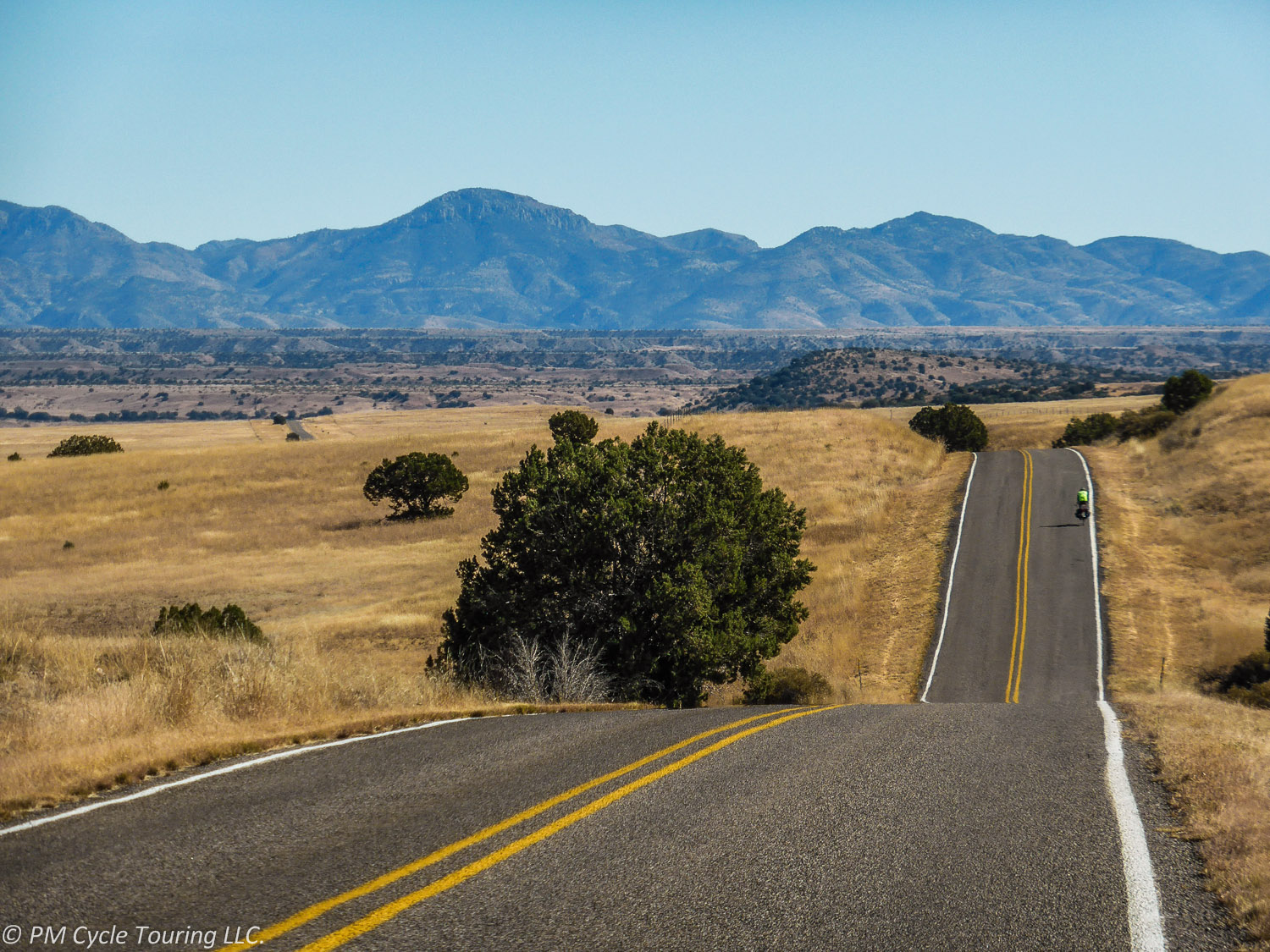The only way to maintain energy levels throughout your bike ride is food. While meals are necessary, probably the most important thing you can do is snack, and snack often. Sometimes while I’m touring with my husband, I find myself getting irritated or overly emotional at small things. The first thing he asks me is, “When is the last time you ate something?” And it’s true! If it’s been a while, I grab something to eat. My handlebar bag is full of goodies to snack on through the day.
I don’t eat while I’m pedaling, so I take a break and snack. Part of touring is enjoying the surroundings, wherever I happen to be. One of the best ways to do this is to pause every 10-15 miles, eat something, and take in your current location.
Additionally I like variety when I eat. I get tired of eating the same thing over and over. Here’s a few types of snacks I’ve tried on my tours:
- Fruit: Whether dried or fresh, fruit is an awesome snack. When touring in summer, stop into a fresh fruit stand and enjoy peaches or plums. Bananas are also great. Blackberries growing on the side of the road in the Pacific Northwest are also amazing. Can’t get fresher than that!
- Gels or Gu: I find sport gels to be most useful when I need a punch of energy, like right before a big climb. I like the ones with caffeine. Be careful, though, because sometimes these can make your stomach upset and you may need a bathroom; try them before you go.
- Granola Bars: In a pinch, we’ll eat those little Quaker granola bars, but these aren’t my favorite. They’re small, and there’s not much to them. I feel like I have to eat 2 or 3 to make a dent in my hunger. An alternative are locally made bars or the Nature’s Own two packs.
- Energy Bars: For example, Cliff or Power Bar, or other varieties. My favorite are probably Cliff or Luna bars. While some of them taste like cardboard (Power Bars), the Cliff Bars are rather tasty and pack a good amount of calories. I prefer candy bars, but just because I have such a sweet tooth.
- Sweets: A fellow tourist from the UK called candy in general “sweets” and it stuck with me. On my last tour I kept craving sour gummies. Hard candies work, basically anything with some sugar, too. Just a little bit of sugar, which gets converted straight to energy.
- Candy Bars: My favorite go-to snack is Snickers. The combination of peanuts and chocolate, along with the sugar of the caramel is pretty much the perfect cycle touring energy bar. I also like to switch it up with other candy bars, but most often return to Snickers. I’ve found Payday bars are also good, with all the peanuts.
Touring is different than everyday living. You have to keep your energy up so you can expend it. This doesn’t mean you can or should just eat anything and everything you want. But it’s important to maintain a certain level so you don’t have an energy crash (or a literal crash, either). So snack, and snack often.
What are your favorite snacks? Share with us in the comments below!
